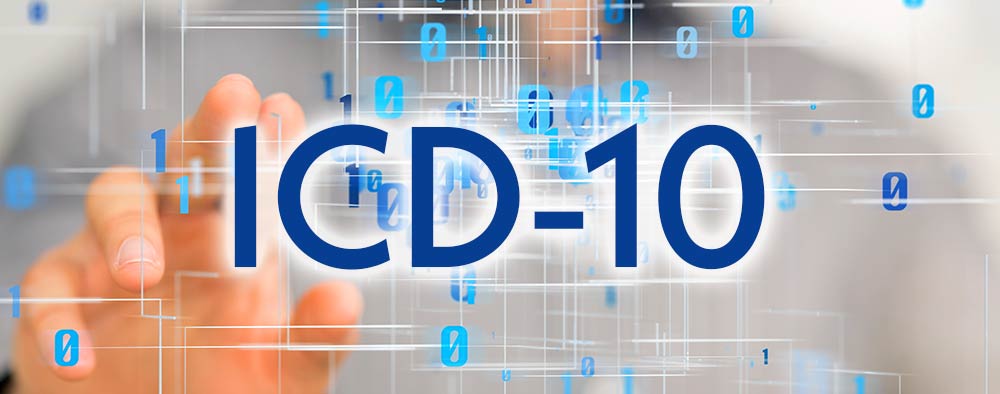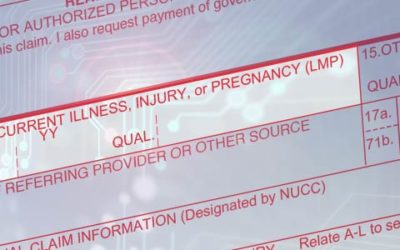by Marty Kotlar, DC, CPCO, CBCS •
President of Target Coding •
The official ICD-10 code set and guidelines for 2025 have been released. They will take effect on October 1, 2024, and remain in effect until September 30, 2025. The 2025 set now includes 78,000 ICD-10 codes. There are 252 new codes, 13 revised codes, and 36 deleted codes.
Choosing a diagnosis code based on intuition alone is insufficient. To ensure that your services are deemed reasonable and justifiable, health plans, state scope of practice laws, and standard practice acts require that your diagnoses be valid, compatible with your procedure codes, and well-documented. The clinical rationale for each diagnosis must be clearly written, included in your care plan, and recorded in the patient’s chart notes.
ICD-10 codes that describe symptoms and signs, as opposed to diagnoses, are acceptable for reporting purposes when a related definitive diagnosis has not been established. While specific diagnosis codes should be reported when supported by the available documentation and clinical knowledge of the patient’s health condition, there are instances when signs/symptoms or unspecified codes are the best choices for accurately reflecting the healthcare encounter. Each patient encounter should be coded to the highest level of certainty. If a definitive diagnosis has not been established by the end of the encounter, it is appropriate to report codes for sign(s) and/or symptom(s) in lieu of a definitive diagnosis.
Do not code diagnoses documented as “probable”, “suspected,” “questionable,” “rule out,” or “working diagnosis” or other similar terms indicating uncertainty. Instead, code the condition(s) to the highest degree of certainty for that encounter/visit, such as symptoms, signs, abnormal test results, or other reasons for the visit.
It is important for providers to fully describe each encounter. When submitting insurance claims, only report diagnoses that were actively addressed. Contributory conditions should be documented. It should be evident from the patient record that all reported diagnoses were addressed.
There are many new ICD-10 codes that chiropractors and other healthcare providers who treat musculoskeletal conditions should be aware of. Below are the most common chiropractic offices.
There are 8 new ICD-10 codes that relate to low back pain, lower extremity pain, and disc degeneration:
- 360: Other intervertebral disc degeneration, lumbar region with discogenic back pain only
- 361: Other intervertebral disc degeneration, lumbar region with lower extremity pain only
- 362: Other intervertebral disc degeneration, lumbar region with discogenic back pain and lower extremity pain
- 369: Other intervertebral disc degeneration, lumbar region without mention of lumbar back pain or lower extremity pain
- 370: Other intervertebral disc degeneration, lumbosacral region with discogenic back pain only
- 371: Other intervertebral disc degeneration, lumbosacral region with lower extremity pain only
- 372: Other intervertebral disc degeneration, lumbosacral region with discogenic back pain and lower extremity pain
- 379: Other intervertebral disc degeneration, lumbosacral region without mention of lumbar back pain or lower extremity pain
There is 1 new ICD-10 code that relates to low back muscle dysfunction:
- 85: Dysfunction of the multifidus muscles, lumbar region
There are 5 new shoulder ICD-10 codes:
- 90: Unspecified synovitis and tenosynovitis, unspecified site
- 91: Unspecified synovitis and tenosynovitis, shoulder
- 911: Unspecified synovitis and tenosynovitis, right shoulder
- 912: Unspecified synovitis and tenosynovitis, left shoulder
- 919: Unspecified synovitis and tenosynovitis, unspecified shoulder
There are 4 new upper arm ICD-10 codes:
- 92: Unspecified synovitis and tenosynovitis, upper arm
- 921: Unspecified synovitis and tenosynovitis, right upper arm
- 922: Unspecified synovitis and tenosynovitis, left upper arm
- 929: Unspecified synovitis and tenosynovitis, unspecified upper arm
There are 4 new thigh ICD-10 codes:
- 95: Unspecified synovitis and tenosynovitis, thigh
- 951: Unspecified synovitis and tenosynovitis, right thigh
- 952: Unspecified synovitis and tenosynovitis, left thigh
- 959: Unspecified synovitis and tenosynovitis, unspecified thigh
There are 4 new ankle and foot ICD-10 codes:
- 97: Unspecified synovitis and tenosynovitis, ankle and foot
- 971: Unspecified synovitis and tenosynovitis, right ankle and foot
- 972: Unspecified synovitis and tenosynovitis, left ankle and foot
- 979: Unspecified synovitis and tenosynovitis, unspecified ankle and foot
Additional Comments:
- A joint effort between the doctor and the office billing/coding manager is essential to achieve complete and accurate documentation, code assignment, and reporting of diagnoses and procedures. The importance of consistent, complete documentation in the patient record cannot be overemphasized. Without such documentation, accurate coding cannot be achieved. The entire record should be reviewed to determine the specific reason for the encounter and the conditions treated.
- In ICD-10, the trauma episodes of care are designated by 3 types of encounters: initial encounter, subsequent encounter, and sequelae. Use the letter A for the initial encounter. This occurs when the patient receives active treatment for the condition, and you are the first provider the patient visits for the present condition. Use the letter D for subsequent= encounters. This is for follow-up visits after the patient has seen another provider. Use the letter S for sequela. Sequela is a late effect problem that is a result of the original problem. This is used for complications or conditions that directly result from a condition, such as scar formation after a burn. When using sequela, it is necessary to use both the injury code that precipitated the sequela and the code for the sequela itself. The S is added only to the injury code, not the sequela code. There is no time limit on when a sequela code can be used.
- You’ve probably heard of CPT code bundling. This is a process that some health plans use to deny claims based on the CCI bundling edits. ICD-10 code bundling is another process that health plans use to deny claims based on the excludes 1 note within the official ICD-10 guidelines. Excludes 1 note means ‘NOT CODED HERE.” Excludes 1 is used when two conditions cannot occur together. Example, M54.50 (low back pain) has an excludes 1 indicator with M54.41 (sciatica with low back pain, right side). Therefore, do not report both codes. Another example is M54.31 (sciatica, right side) has an excludes 1 indicator with M51.361 (other intervertebral disc degeneration, lumbar region with lower extremity pain only). If both codes are submitted a denial will probably occur.
- Acute traumatic versus chronic or recurrent musculoskeletal conditions. Many musculoskeletal conditions are a result of previous injury or trauma to a site or are recurrent conditions. Bone, joint or muscle conditions that are the result of a healed injury are usually found in chapter 13 of the Tabular List. Recurrent bone, joint or muscle conditions are also usually found in chapter 13. Any current, acute injury should be coded to the appropriate injury code from chapter 19 of the Tabular List. Email info@targetcoding.com for a copy of the Tabular List or visit https://www.cms.gov/medicare/coding-billing/icd-10-codes/2025-icd-10-cm.
- Schedule a training with all doctors and staff members to review the new 2025 ICD-10 code set and guidelines. Enter the training details (e.g., who attended, topics) into your Billing & Coding Compliance Training Log.
Dr. Marty Kotlar is the President of Target Coding. Over the last 15 years, Target Coding has helped hundreds of chiropractors with compliance as it relates to billing, coding, documentation, Medicare & HIPAA. Dr. Kotlar is certified in compliance, a certified coding specialist, a contributing author to many coding and compliance publications, and a guest speaker at many state association conventions. He can be reached at 1-800-270-7044, website – www.TargetCoding.com, email – drkotlar@targetcoding.com.










 ▶︎
▶︎  Why is the Discount Challenge prize amount $15,024? Because that is the average “per-occurrence” fine for Medicare inducements. That’s not $15,024 per patient, that’s not per provider, that’s PER VISIT. Stinks, doesn’t it? To us, the prize amount is worth the investment if we can help our profession better understand proper discounting.
Why is the Discount Challenge prize amount $15,024? Because that is the average “per-occurrence” fine for Medicare inducements. That’s not $15,024 per patient, that’s not per provider, that’s PER VISIT. Stinks, doesn’t it? To us, the prize amount is worth the investment if we can help our profession better understand proper discounting.